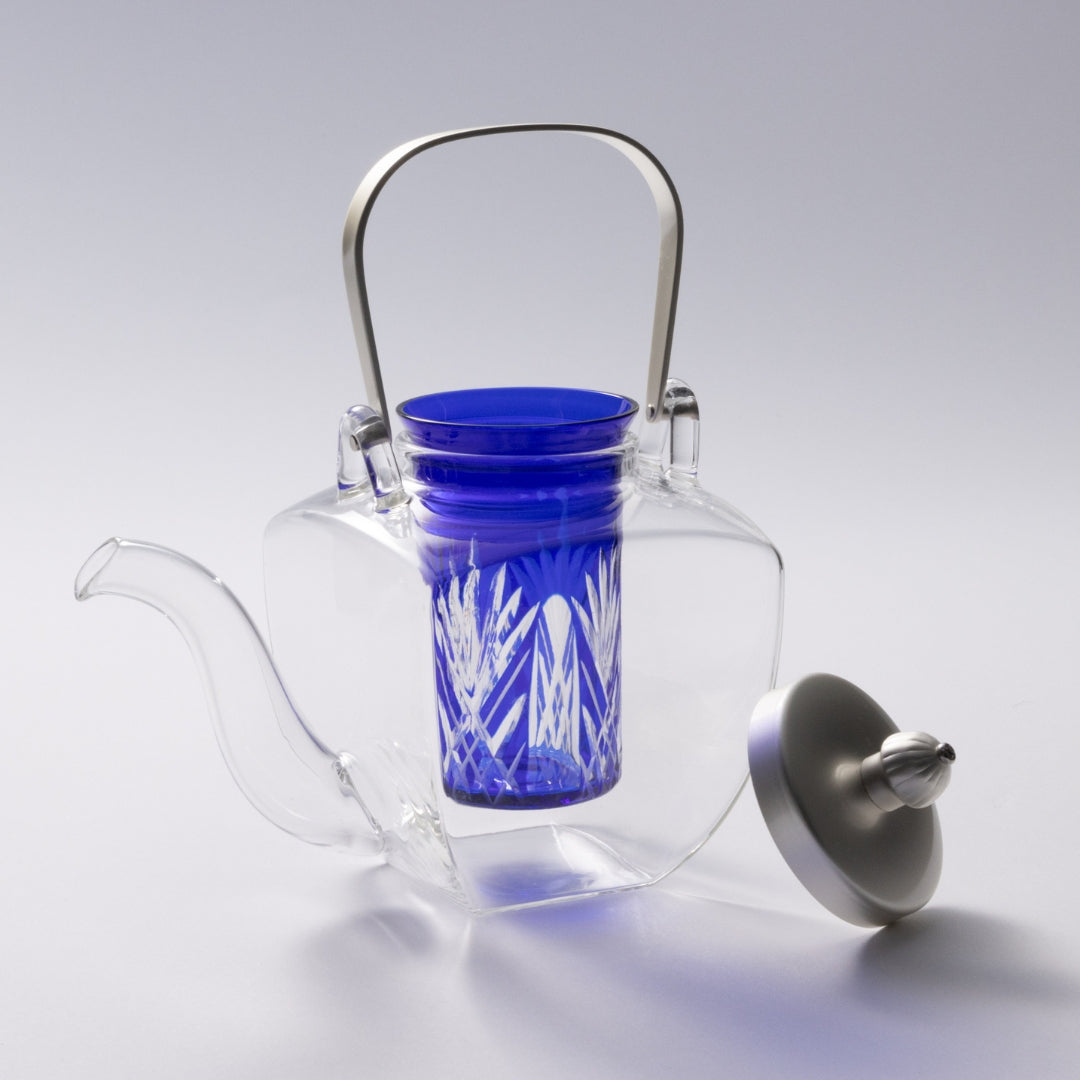Edo Kiriko Chirori Sake Set
Edo Kiriko Chirori Sake Set
Couldn't load pickup availability
Originally, the "Chirori", a tool for heating sake, was made of metal, but by making it of glass, Hirota Glass has created an elegant, sophisticated item. This set’s beauty captivates the soul, the extravagant blue core featuring the beautiful Japanese glass technique “kiriko”.
Ideal for serving both cold and hot sake. For cold sake, simply put ice in the blue Edo Kiriko container to cool the sake in the "Chirori" without dilution. For hot sake, the "Chirori" is made of heat-resistant glass, and warm sake can be added directly into it after heating. Recommended not only for sake but also for tea, enjoy the color of Japanese tea from within the pot.
Detail
Detail
Care & Use
Care & Use
- Check our tips for care & use.





















